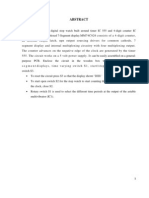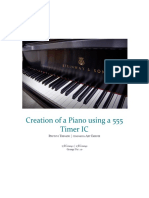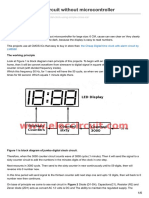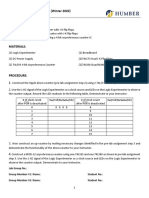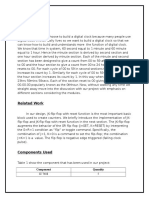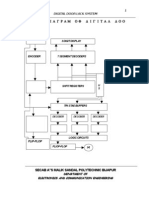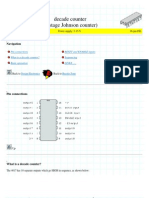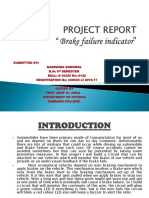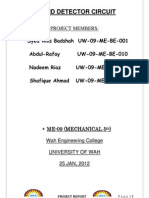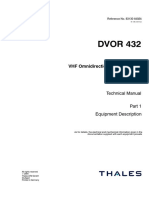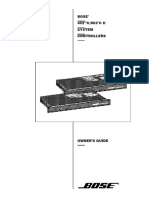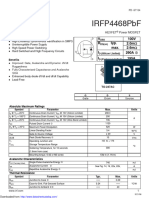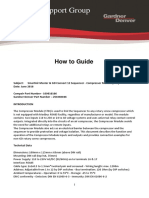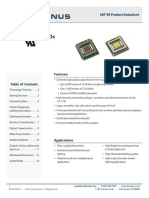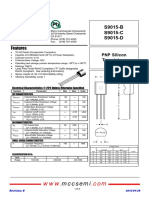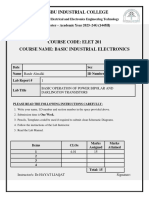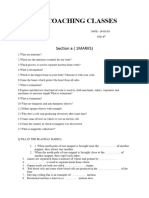100% found this document useful (3 votes)
3K views4 pagesCircuit Diagram Digital Clock Circuit Using 4026 Ic
This document describes a digital clock circuit that uses the 4026 IC. The circuit includes a 555 timer to generate clock pulses, four 4026 decade counters to count the seconds, minutes and hours, and AND gates to reset the counters when they reach their limits. When power is applied, the 7-segment displays will show 00:00:00. The 555 timer provides clock pulses that increment each 4026 counter in turn. AND gates are used to reset the seconds at 60 and minutes/hours at 24 to rollover the time display.
Uploaded by
Acrylic Painting - art for changeCopyright
© © All Rights Reserved
We take content rights seriously. If you suspect this is your content, claim it here.
Available Formats
Download as DOCX, PDF, TXT or read online on Scribd
100% found this document useful (3 votes)
3K views4 pagesCircuit Diagram Digital Clock Circuit Using 4026 Ic
This document describes a digital clock circuit that uses the 4026 IC. The circuit includes a 555 timer to generate clock pulses, four 4026 decade counters to count the seconds, minutes and hours, and AND gates to reset the counters when they reach their limits. When power is applied, the 7-segment displays will show 00:00:00. The 555 timer provides clock pulses that increment each 4026 counter in turn. AND gates are used to reset the seconds at 60 and minutes/hours at 24 to rollover the time display.
Uploaded by
Acrylic Painting - art for changeCopyright
© © All Rights Reserved
We take content rights seriously. If you suspect this is your content, claim it here.
Available Formats
Download as DOCX, PDF, TXT or read online on Scribd
/ 4

